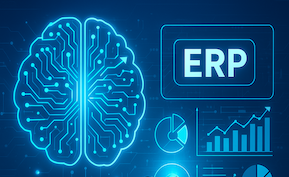From Dusty Archives to Searchable Insights: Using OCR and NLP to Modernize Legacy Contracts
Target keywords: contract OCR, NLP contract analysis, legacy contract digitization, clause extraction, CLM AI modernization.
The Hidden Value Locked in Legacy Documents
Organizations often possess decades of contracts stored as PDFs or paper scans—treasure troves of commercial intelligence buried under dust. Without digitization, it’s impossible to answer basic questions: How many contracts auto-renew this quarter? Which vendors lack updated data-processing addenda? Enter optical character recognition (OCR) and natural-language processing (NLP), technologies that transform static archives into structured, searchable assets for your contract lifecycle management (CLM) platform.
Stage 1: Inventory and Preparation
Before running OCR, perform a detailed inventory. Catalog file formats, locations, and contract types. Prioritize high-value categories—customer MSAs, vendor agreements, leases—where data visibility drives the most ROI. Remove duplicates and corrupted files. Assign each document a unique ID for tracking through the pipeline.
Stage 2: OCR — Turning Images into Text
OCR software converts scanned images into machine-readable text. Choose enterprise-grade engines supporting multi-language recognition and table extraction. Adjust resolution (300 dpi +) for accuracy, and normalize file types to searchable PDFs. Post-OCR validation compares extracted text with manual samples to measure accuracy; anything under 95% should be reprocessed.
Stage 3: NLP and Clause Extraction
Once text is searchable, NLP models can extract entities—party names, effective dates, renewal terms—and classify clause types. Pre-trained legal language models identify key provisions like confidentiality, indemnity, limitation of liability, and termination rights. Custom models fine-tune extraction for domain-specific contracts (e.g., SaaS SLAs, real-estate leases).
Structured data enables powerful queries: “Show all contracts with auto-renewal longer than 1 year” or “List vendors without cybersecurity obligations.” This visibility drives both compliance and revenue assurance.
Stage 4: Data Normalization and Mapping
Raw extraction yields messy outputs—different date formats, inconsistent clause naming. Normalize data using transformation scripts. Map fields to your CLM schema: effective date → EffectiveDate; counterparty → PartyName; renewal term → RenewalMonths. Establish controlled vocabularies for clause categories to support analytics later.
Stage 5: Validation & Quality Assurance
Human validation remains critical. Review samples from each batch to confirm entity and clause accuracy. Implement a feedback loop: corrections feed back into NLP training data, steadily improving precision. Record confidence scores so users know whether they can rely on a field for automation versus human review.
Integrating Clean Data into CLM
Import validated data into the CLM with document links, metadata, and clause tags. Attach related child documents (SOWs, amendments) to master records. Build dashboards showing legacy coverage (% of contracts digitized, % with renewal data extracted) and risk heatmaps highlighting missing clauses.
Security and Compliance Considerations
Legacy archives often contain sensitive information. Ensure OCR and NLP processing occur within secure environments that comply with GDPR and SOC 2. Mask personal data where unnecessary, encrypt files at rest, and maintain audit logs of every transformation step.
Business Impact: From Searchability to Strategy
- Faster diligence: M&A teams can search thousands of contracts instantly.
- Renewal awareness: Alerts on expiring agreements prevent revenue leakage.
- Risk mitigation: Identify contracts missing compliance clauses.
- Negotiation intelligence: Compare liability caps or termination language across counterparties.
Continuous Improvement with AI Feedback Loops
Modern CLMs support active learning—when users correct extracted data, the system retrains itself. Over time, accuracy climbs from 80 to 98 percent, reducing manual oversight. AI dashboards show trending clause deviations and new language patterns appearing in drafts.
Cost–Benefit Analysis
Typical OCR/NLP programs deliver ROI within 12 months. Costs include scanning, software licensing, and validation labor. Benefits include reduced outside-counsel fees for diligence, fewer missed renewals, and measurable compliance improvements. Quantify savings per use case to secure executive sponsorship for full rollout.
Getting Started
Run a pilot with 5,000 contracts across two types (e.g., customer and vendor). Measure extraction accuracy, time saved in searches, and user adoption. Use results to refine models before expanding globally. Ultimately, the goal is a living digital contract repository—every clause, date, and obligation searchable within seconds.
Final Thoughts
OCR and NLP aren’t just modernization tools—they’re the bridge from static documents to actionable intelligence. When paired with a robust CLM, they transform legal archives into an engine for smarter decisions, compliance, and revenue growth. The sooner your legacy contracts become data, the faster your business moves.







